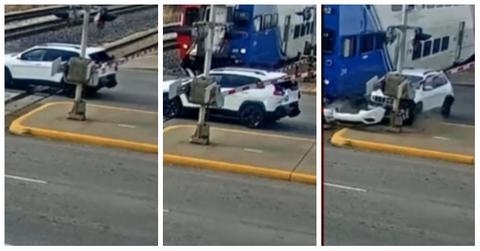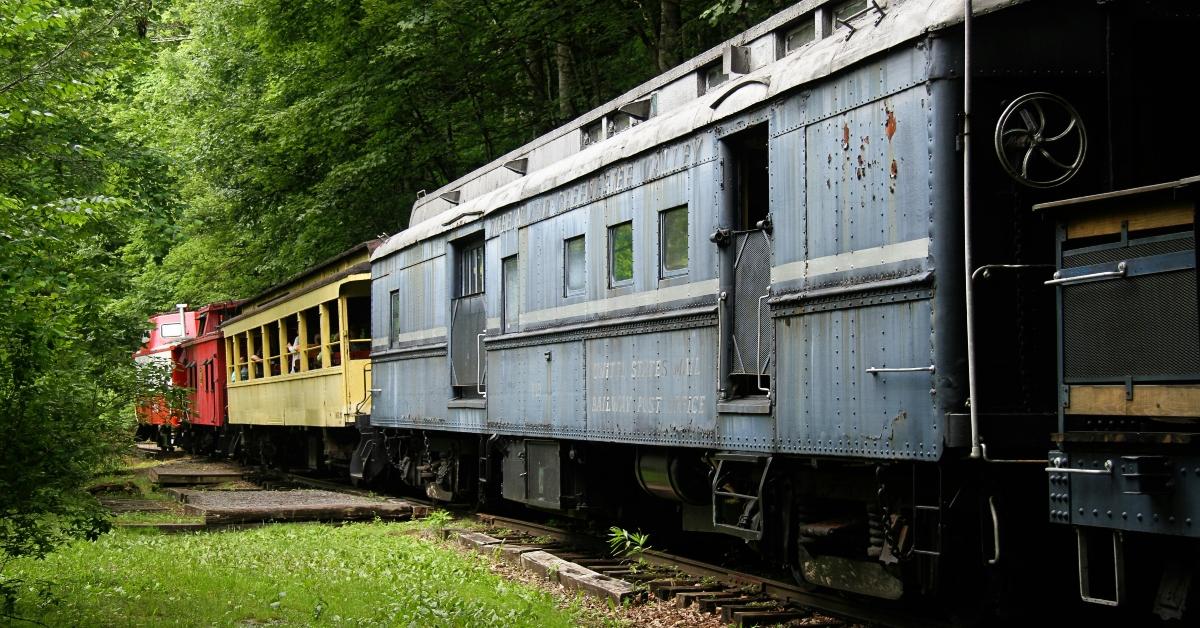Why Do Cars Get Stuck on Train Tracks? Here's the Explanation Behind the Phenomenon
It's a terrifying thought: Your car stalls over a train track just as a train roars towards you.
Published Feb. 13 2025, 2:26 p.m. ET
There are a few fears that follow people when they get behind the wheel of a car. If you're a child of the 1990s, getting behind a truck hauling logs is probably on that list of fears (hello Final Destination fans). Other fears might include hydroplaning, being t-boned at an intersection, being rear-ended, or losing your brakes on the highway.
While all of those scenarios certainly do occur to varying degrees, most of us won't encounter them on a daily basis.
However, there's another fear that seems to lurk in the minds of drivers everywhere: the fear of getting stuck on the train tracks. It seems to occur with alarming regularity. So why do cars get stuck in the first place? Here's what we know about the phenomenon, as well as a look at several incidents that made 2025 the year of the car versus train showdowns.
Why do cars get stuck on train tracks? There are a few reasons.
It's a terrifying thought. You're crossing a train track, you hear the warning klaxon begin to sound as the arms begin to lower, and suddenly you find that your car can't move forward. You try to reverse, and it won't go.
At this point, those who are physically able usually exit their cars and try to get a safe distance away, because it's a better alternative than sitting there waiting to be struck by a speeding train. But why does it happen?
Cars stall all the time, but it's certainly more dramatic to stall on train tracks, so it's reported whenever it occurs, especially if it's caught on camera, according to StraightDope.
CarAwareness offers an additional suggestion as to why it might happen: The road settles over time, and the tracks get caught on the car's undercarriage.
Additionally, it's possible that people panic and can't restart their cars due to their agitated mental state. So it's likely a combination of the tracks getting caught on the car, the person panicking, and/or it could be due to the fact that tracks often have a slight incline before them and a decline after them. This means that a car struggling with mechanical issues might stall over the incline.
However, it's likely we think they're more common than they actually are due to the high media coverage of each incident. So you can cross that track with confidence. Probably.
According to OperationLifesaver, in 2024 there were 2,045 train-vehicle collisions, resulting in 252 deaths and 653 injuries. To compare, LookUpaPlate reports that there are 69 million car breakdowns a year.
The odds are in your favor.
Several high-profile car versus train encounters marked 2025.
And speaking of media coverage of each incident, 2025 has already provided a bumper crop of car versus train showdowns. Luckily, the incidents we're highlighting resulted in no injuries or deaths.
On Feb. 4, 2025, Marcus Jordan, son of famed NBA legend Michael Jordan, was arrested after he fled police in Florida after a routine traffic stop indicated that he was driving while intoxicated. He was caught after his Lamborghini was spotted stuck on train tracks, just minutes before a commuter train was scheduled to roll through.
Lamborghinis are very low-riding cars, so it seems likely that his undercarriage was stuck in this situation.
Then on Feb. 13, 2025, the BBC shared a video to their TikTok which featured a person stalling over the tracks in a white SUV.
The driver managed to exit the vehicle just moments before a train slammed into it, demolishing the front end of the car.
While it's a terrifying thing to consider, especially if you drive with pets or small children who would be difficult to remove quickly from a car, the good news is that most of us won't stall over the tracks, statistically.
But just like most of us change lanes to avoid staying behind log trucks, you'll forgive us if we hold our breath going over the tracks. And don't worry, we won't tell if you do too.

